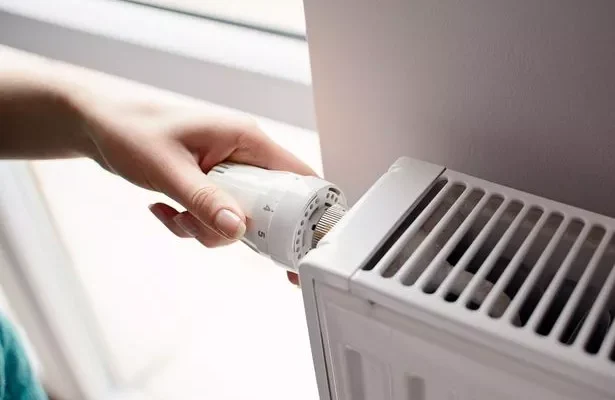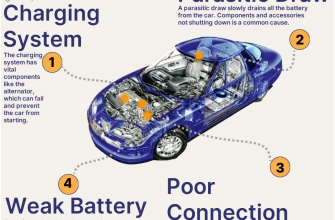As winter approaches and the chill sets in‚ the anticipation of cozy evenings at home can quickly sour if your radiator is malfunctioning․ A faulty radiator is not just an inconvenience; it can lead to frigid indoor temperatures and inflated energy bills․ In this article‚ we’ll explore the common issues that plague radiators‚ the signs that indicate trouble‚ and practical steps to ensure your heating system is in top shape․
- Understanding Your Radiator
- Common Radiator Problems
- Signs Your Radiator Needs Attention
- Tips for Maintaining Your Radiator
- When to Call a Professional
- Maximizing Efficiency: The Importance of Regular Maintenance
- DIY Troubleshooting: Taking Matters Into Your Own Hands
- Investing in Quality: The Long-Term Benefits
- Understanding Energy Efficiency Ratings
- The Role of Insulation in Your Heating Strategy
- The Mechanics of Heat Distribution
- Spotting the Red Flags
- Effective Maintenance Practices
- Upgrading for Efficiency
- The Bigger Picture: Home Insulation
Understanding Your Radiator
Before diving into the faults‚ it’s crucial to understand how a radiator works․ Radiators operate by circulating hot water or steam through a series of pipes‚ releasing heat into your home․ When they function properly‚ they provide consistent warmth‚ but a malfunction can lead to a cascade of problems․
Common Radiator Problems
Here are the most common issues that can render your radiator ineffective:
- Air Trapped in the System: Air pockets can prevent the proper circulation of hot water‚ leading to cold spots in your home․
- Leaks: Water leaks can significantly reduce efficiency and may lead to water damage if left unaddressed․
- Rust and Corrosion: Over time‚ radiators can rust‚ leading to holes and reduced heating capacity․
- Thermostat Issues: A faulty thermostat can misread temperatures‚ causing your radiator to underperform․
- Blockages: Sediment buildup can block the flow of water‚ restricting heat distribution․
Signs Your Radiator Needs Attention
Being proactive about radiator maintenance can save you from expensive repairs and chilly days․ Look out for these telltale signs:
- Inconsistent heating across different rooms․
- Strange noises‚ like banging or hissing‚ when the radiator is on․
- Visible leaks or water pooling around the base of the radiator․
- A noticeable increase in your energy bills without a corresponding increase in usage․
Tips for Maintaining Your Radiator
Regular maintenance can keep your radiator running efficiently․ Here are some tips:
- Bleed Your Radiator: Release trapped air by using a radiator key to open the bleed valve․ This should be done at the start of the heating season․
- Check for Leaks: Regularly inspect your radiator and the surrounding area for any signs of leakage․
- Flush the System: Consider flushing your radiator system every few years to remove sediment buildup․
- Inspect the Thermostat: Ensure that your thermostat is functioning correctly and replace it if necessary․
When to Call a Professional
If you’ve tried the basic maintenance steps and your radiator still isn’t working properly‚ it may be time to call in a professional․ A heating engineer can diagnose deeper issues‚ perform necessary repairs‚ and ensure that your heating system is functioning efficiently․
A faulty radiator is indeed a recipe for cold days and high bills‚ but with proper understanding and proactive maintenance‚ you can keep your home warm and your energy costs manageable․ Don’t let a malfunctioning radiator ruin your winter; take action today to ensure a cozy‚ comfortable environment․
Maximizing Efficiency: The Importance of Regular Maintenance
In the battle against the winter chill‚ ensuring your radiator operates at peak efficiency is paramount․ Regular maintenance not only prolongs the lifespan of your heating system but also prevents costly repairs down the road․ Set a schedule to inspect your radiators at least once a year․ This proactive approach can help you identify minor issues before they escalate into major problems‚ keeping you warm and your bills low․
DIY Troubleshooting: Taking Matters Into Your Own Hands
For the handy homeowner‚ there are several DIY troubleshooting steps you can take before calling a professional․ Start with the basics: check the thermostat settings and ensure they’re calibrated correctly․ Next‚ examine the radiator for any visible signs of corrosion or leaks․ If you hear unusual noises‚ it may indicate trapped air or sediment buildup․ Consider flushing the system yourself if you feel comfortable doing so‚ or consult online tutorials for guidance․ These small interventions can make a significant difference in your radiator’s performance․
Investing in Quality: The Long-Term Benefits
When it comes to heating systems‚ investing in quality pays off in the long run․ If your radiator is old and inefficient‚ consider upgrading to a more modern model that utilizes advanced technology for better heat distribution and energy efficiency․ Newer radiators often come with features like programmable thermostats and smart controls that allow you to optimize your heating schedule․ This investment not only enhances comfort but can also lead to considerable savings on your energy bills over time․
Understanding Energy Efficiency Ratings
In your quest for a more efficient heating system‚ familiarize yourself with energy efficiency ratings․ Look for products that bear the ENERGY STAR label‚ a designation that signifies superior energy performance․ These products are rigorously tested and designed to reduce energy consumption without sacrificing comfort․ By choosing energy-efficient radiators‚ you contribute to environmental conservation while enjoying a warmer home․
The Role of Insulation in Your Heating Strategy
While a properly functioning radiator is crucial‚ don’t overlook the importance of adequate insulation in your home․ Poor insulation can lead to significant heat loss‚ forcing your heating system to work harder and driving up your energy bills․ Evaluate your windows‚ doors‚ and walls for drafts‚ and consider adding insulation where necessary․ Simple solutions like weatherstripping can make a world of difference in maintaining a consistent indoor temperature․
As the temperatures drop and the days grow shorter‚ a faulty radiator can turn your sanctuary into an icy cave․ By recognizing the signs of trouble and taking proactive steps for maintenance‚ you can ensure a warm and inviting home throughout the winter months․ Remember‚ a little attention goes a long way—keeping your heating system in check not only enhances comfort but also protects your wallet from soaring energy costs․ Stay warm‚ stay smart‚ and let your radiator be the unsung hero of your winter experience!
As winter approaches‚ the importance of a well-functioning heating system cannot be overstated․ Radiators are often the unsung heroes of our homes‚ diligently working to keep us warm․ However‚ a faulty radiator can transform a cozy haven into an uncomfortable space‚ leading to shivers and escalating energy bills․ Understanding the mechanics of your radiator‚ recognizing signs of malfunction‚ and knowing how to maintain it effectively can make all the difference․
The Mechanics of Heat Distribution
Radiators operate on principles of convection and conduction․ Hot water or steam flows through the radiator‚ warming its metal surface‚ which then radiates heat into the surrounding air․ Over time‚ various factors can compromise this process‚ leading to inefficiencies that not only affect your comfort but also your wallet․ By grasping how your radiator works‚ you can take proactive steps to ensure it runs smoothly․
Spotting the Red Flags
It’s crucial to stay vigilant for any signs that your radiator may be on the fritz․ Here are a few red flags to monitor:
- Cold Spots: If certain areas of your radiator are cold while others are warm‚ it may be a sign of trapped air or a blockage in the system․
- Noisy Operation: Unusual sounds‚ such as clanking or gurgling‚ often indicate air trapped in the system or sediment buildup․
- Visible Damage: Look for rust‚ leaks‚ or corrosion‚ which can lead to inefficiency or even complete failure․
- Increasing Bills: A sudden spike in energy costs without clear reasoning could indicate that your radiator is working overtime due to inefficiencies․
Effective Maintenance Practices
To maximize the lifespan and efficiency of your radiator‚ consider implementing these maintenance practices:
- Regular Bleeding: Bleeding your radiator releases trapped air and allows hot water to circulate freely․ This simple task can significantly improve heating efficiency․
- Inspect and Clean: Regularly check for dust accumulation and clean the exterior and surrounding areas to enhance heat output․
- Schedule Professional Inspections: A professional can perform a thorough check to identify potential issues before they escalate into costly repairs․
Upgrading for Efficiency
If your radiator is showing signs of age or inefficiency‚ it might be time to consider an upgrade․ Newer models are designed with advanced technology that promotes better heat distribution and energy efficiency․ Features such as programmable thermostats and smart controls allow for optimal temperature regulation‚ leading to reduced energy consumption and lower bills․
The Bigger Picture: Home Insulation
While ensuring your radiator is in top shape is essential‚ it’s also vital to consider the broader context of your home’s heating efficiency․ Poor insulation can undermine the effectiveness of your heating system․ Investing in quality insulation for your walls‚ windows‚ and doors can significantly reduce heat loss‚ making it easier for your radiator to maintain a comfortable temperature without working overtime․
In the fight against frigid temperatures and high energy bills‚ your radiator is a crucial ally․ By understanding its function‚ recognizing the signs of trouble‚ and committing to regular maintenance‚ you can ensure that your heating system operates at peak efficiency․ Don’t wait for winter’s icy grip to expose a faulty radiator; take proactive steps today to secure a warm and inviting home․ With a little care and attention‚ your radiator can continue to be the reliable source of comfort you depend on during the cold months ahead․










I found this article very useful! The explanations are clear and concise, making it easy to understand how to maintain my radiator properly.
Fantastic breakdown of radiator issues! The signs to look out for are spot on. I’ll be checking my radiator this weekend, thanks to this article.
I appreciate the practical tips for maintaining radiators. This guide will definitely help me keep my heating system in check this winter. Great read!
This article is incredibly informative! It really helped me understand the common issues with radiators and how to spot them before they become major problems. Highly recommend!
This article is a must-read for homeowners! It covers everything from common problems to maintenance tips. I feel much more prepared for winter now!
Great information on radiator maintenance! I never thought about how air pockets could affect heating. This will save me a lot of hassle in the future.
Such a helpful article! I had no idea about the importance of bleeding a radiator until now. Thanks for sharing these insights!